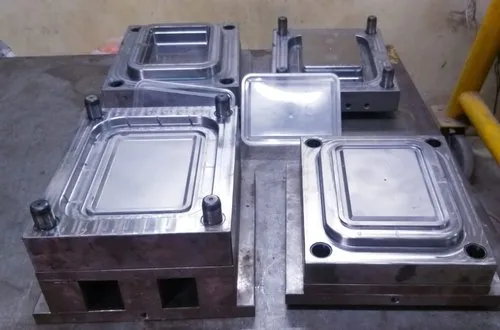Creating a mould for a sweets container involves a manufacturing process that typically uses materials like steel or aluminium. The mould is a critical component in the production of sweets containers as it shapes the molten material into the desired form. Sweets Container Mould Manufacturers use general steps involved in creating a sweets container mould:
Designing the Mold:
Engineers and designers create a 3D model of the mould based on the specifications of the sweets container. This design includes all the necessary details, such as the container’s shape, size, and any intricate features.
Material Selection:
Common materials include steel and aluminium. Steel moulds are durable and can withstand high production volumes, while aluminium moulds are lighter and can be more cost-effective for lower production quantities.
Machining or Fabrication:
The mould design is translated into physical form through machining or fabrication processes. CNC (Computer Numerical Control) machining is often used for precision, ensuring that the mould is an accurate representation of the design.
Casting (for Aluminium Molds):
If an aluminum mould is chosen, the mould can be created through casting. Molten aluminum is poured into the mould cavity, allowing it to cool and solidify to form the desired shape.
Heat Treatment (for Steel Molds):
Steel moulds may undergo heat treatment processes to enhance their hardness and durability. Heat treatment helps ensure that the mould can withstand the stresses and wear associated with repeated use during the injection moulding process.
Surface Finishing:
Sweets Container Mould Manufacturers applied mould surfaces are finished to achieve the desired texture or appearance on the sweets container. This step is crucial for the final aesthetics of the product.
Testing and Quality Control:
The mould undergoes testing to ensure it meets quality standards. This may involve test runs with molten material to produce sample sweets containers and check for any defects or issues.
Injection Moulding:
Molten material (such as plastic or other suitable materials for sweets containers) is injected into the mould cavity. The material takes the shape of the mould as it cools and solidifies.
Ejection:
Once the material has solidified, the mould opens, and the newly formed sweets container is ejected. The process is then ready for the next cycle.
Creating a sweets container mould involves a combination of engineering, precision machining, and manufacturing expertise. The choice of materials and the attention to detail in the design and fabrication processes are critical to ensuring the efficiency and durability of the mould for large-scale production.

